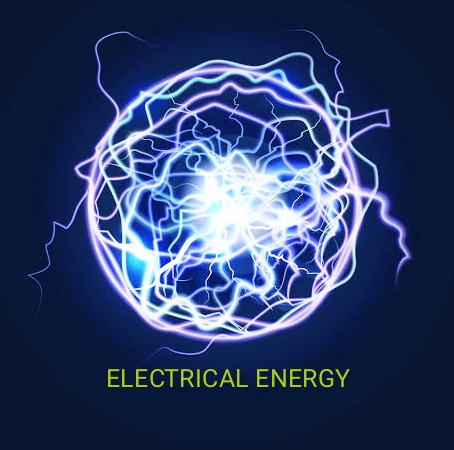Types of Electrical Energy
TYPES OF ELECTRIC ENERGY:
in the methods of science,we immediately become suspicious of any scheme who claims to create energy.
The law of conservation of energy is that energy can neither be created nor destroyed.
However, its form can be converted such that energy can be converted from one form of energy to another.
Electric energy is the energy who converted from some other form.
There are a numbers of way in which this is accomplished.
Some of them are as follows:
(1)Electrochemical energy conversion:
Electric batteries produce electric energy with the help of conversion of chemical energy.
A potentially important use of this type of batteries is in the electric car. Fuel cell is in this general classification.
(2)Electromechanical energy conversion:
The rotating generator produces electric energy from mechanical energy of
rotation.
Usually, the mechanical energy who converted from thermal energy by a turbine and, in turn, the thermal energy is converted from chemical energy with the help of burning fossil fuel or from nuclear fuel.Sometimes.the conversion is from hydrauilic energy by hydroelectric generation.
(3)Magnetohydro dynamic (MHD) energy conversion:
These devices make electric energy from the mechanical energy of a high velocity ionised gas.
(4)Photovoltaic energy conversion:
A class of devices are able to convert light energy directly in to electric energy.
The best known device of this types are the solar cell.
(5)Thermo-electric energy conversion:
When two dissimilar metals say copper and iron are joined together at two ends
and a temperature difference is maintained between the joints an electric current flows between the junctions.
All these devices may be called energy sources. The function of each of these
different sources of electric energy is the same in terms of energy and charge.in one form of battery, for example, two metallic electrodes one of zinc and one of copper are immersed in dilute sulphuric acid.
The formation of zinc and copper ions causes negative charge to accumulate at the electrodes.Energy is supplied to the charge by the difference in the energy of ionization of zinc and copper in the chemical reaction.
Once the battery circuit is closed by an external connection the chemical energy is expended as the work for each unit of charge in transporting the charge around the external circuit.
The quantity " energy per unit charge ” or identically, " work per unit charge ” is called voltage.





Hello sir what do u think abt The law of conservation of energy ??
ReplyDeleteNice article
ReplyDelete